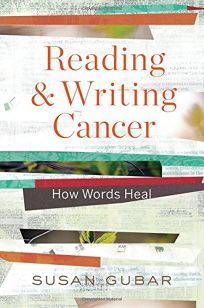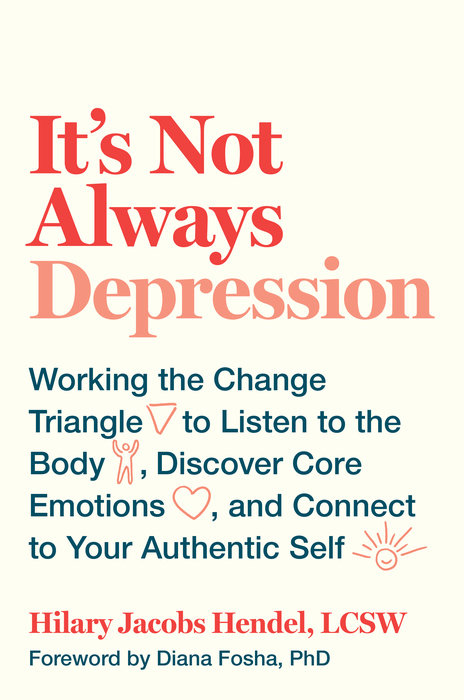To understand the minds of individual cancers, we are learning to mix and match these two kinds of learning — the standard and the idiosyncratic — in unusual and creative ways.
YOU MIGHT ALSO LIKE
CLEAR ALL
BY TOPIC
BY TEACHER
BY TYPE
FILTER

TOPIC
- Healing Approaches (34)
- Self-Development (34)
- Inspiration (32)
- Self-Discovery (32)
- Depression (31)
- Illness and Injury (31)
- Anxiety (28)
- Finding Meaning (26)
- Self-Expression (26)
- Resilience (24)
- Mind-Body Connection (23)
- Self-Healing (22)
- Anger (21)
- Building Character (20)
- Endurance (20)
- Emotional and Mental Health (19)
- Fatigue (19)
- Handling a Loved One’s Illness (19)
- Facing Own Death (18)
- Fear (18)
- Grit (18)
- Growth Mindset (16)
- Offering Support to Others (16)
- Work Challenges (16)
- Relationship Challenges (15)
- Women’s Well-Being (15)
- Human Potential (14)
- Identity (14)
- Self-Care (14)
- Courage (13)
- Memoir (13)
- BIPOC Well-Being (12)
- Chronic Pain (12)
- Decision Making (12)
- Neuroscience (12)
- Self-Reflection Practices (12)
- Communication Skills (11)
- Fellowship and Community (11)
- Gratitude (11)
- Integrative Medicine (11)
- Stress Management (11)
- Athlete Well-Being (10)
- Authenticity (10)
- Caregiver Well-Being (10)
- Diet and Nutrition (10)
- Death and Dying (9)
- Leadership (9)
- Managing Energy (9)
- Positive Thinking (9)
- Self-Control (9)
- Speaking Your Truth (9)
- Stress (9)
- Transformation (9)
- Well-Being (9)
- Black Well-Being (8)
- Chronic Health Conditions (8)
- Entrepreneurship (8)
- Exercise (8)
- Grief (8)
- Intuition (8)
- Parenting (8)
- Peak Performance (8)
- Play (8)
- Self-Actualization (8)
- Self-Reckoning (8)
- Acceptance (7)
- Access to Education (7)
- Body Image (7)
- Community Healing (7)
- Goal Setting (7)
- Journaling (7)
- Perception (7)
- Physical Health (7)
- Self-Limiting Beliefs (7)
- Self-Reliance (7)
- Social Justice (7)
- Spiritual Healing (7)
- Sudden Weight Change (7)
- Trauma Healing (7)
- Confidence (6)
- Empowerment (6)
- Habit Formation (6)
- Honoring Emotion (6)
- Insomnia (6)
- Intention (6)
- Mindfulness (6)
- Motivation (6)
- Nutritional Medicine (6)
- Presence (6)
- Racial Justice (6)
- Search for Purpose (6)
- Self-Acceptance (6)
- Self-Discipline (6)
- Self-Love (6)
- Work-Life Balance (6)
- Activism/Service (5)
- Awareness (5)
- Cross-Cultural Dynamics (5)
- Energy Healing (5)
- Focus (5)
- Friendship (5)
- Healthy Eating (5)
- Holism (5)
- Inner Life (5)
- Inner Strengths (5)
- Joy (5)
- Loss of Appetite (5)
- Meditation (5)
- Men’s Well-Being (5)
- Productivity (5)
- Racial Healing (5)
- Racism (5)
- Self-Realization (5)
- Situational Depression (5)
- Slumps (5)
- Storytelling (5)
- The Feldenkrais Method (5)
- Addiction (4)
- Asking for Help (4)
- Awe (4)
- Brain Health (4)
- Buddhism (4)
- Child’s Challenging Behavior (4)
- Children’s Well-Being (4)
- Compassion Fatigue (4)
- Emotional Intelligence (EQ) (4)
- Epigenetics (4)
- Habits of Mind (4)
- Happiness (4)
- Hope (4)
- Indigenous Well-Being (4)
- Love (4)
- Personal Development (4)
- Poetry (4)
- Racial Identity (4)
- Soul Mission (4)
- Spiritual Life (4)
- Values (4)
- Vulnerability (4)
- Work Relationships (4)
- Zen Buddhism (4)
- Accepting Love (3)
- Addiction Recovery (3)
- Aging (3)
- Art Therapy (3)
- Autoimmune Disease (3)
- Betrayal (3)
- Breathwork (3)
- Child’s ADD/ADHD (3)
- Child’s Anxiety (3)
- Competition (3)
- Consciousness (3)
- Curiosity (3)
- Failure (3)
- Faith (3)
- Family Dynamics (3)
- Feminism (3)
- Guilt (3)
- Identity Shifts (3)
- Inner Child (3)
- Integrity (3)
- Interdependence (3)
- Latinx Well-Being (3)
- Letting Go (3)
- Life Challenges (3)
- Manifestation (3)
- Moral Philosophy (3)
- Movement Meditation (3)
- Negative Self-Talk (3)
- Neurodiversity (3)
- Passion (3)
- Problem Solving (3)
- Relationship with Money (3)
- Relationship with Time (3)
- Science and Spirituality (3)
- Self-Worth (3)
- Spiritual Awakening (3)
- Spiritual Growth (3)
- Stoicism (3)
- Trust (3)
- Willpower (3)
- Work Ethic (3)
- Zen Meditation (3)
- AAPI Well-Being (2)
- Child Depression (2)
- Cognitive Behavioral Therapy (2)
- Collaboration (2)
- Collective Trauma (2)
- Connection (2)
- Connection with Nature (2)
- Death or Loss of a Loved One (2)
- Divorce and Breakup (2)
- Drug Addiction (2)
- Dysfunctional Childhood (2)
- Empathy (2)
- Energy Balancing (2)
- Female Empowerment (2)
- Freedom (2)
- Handling a Child’s Illness (2)
- Herbal Supplementation (2)
- Hospice (2)
- Humility (2)
- Jealousy/Envy (2)
- Kids and Sports (2)
- Learning Styles (2)
- LGBTQIA Well-Being (2)
- Life Force Energy (2)
- Lifestyle Medicine (2)
- Loss of Partner/Spouse (2)
- Massage (2)
- Mindfulness Practices (2)
- Motherhood (2)
- Naturopathy (2)
- Neuropsychology (2)
- Positive Psychology (2)
- Positive Self-Talk (2)
- Quantum Physics (2)
- Retirement (2)
- Romantic Relationships (2)
- Sacred Feminine (2)
- Self-Compassion (2)
- Self-Esteem (2)
- Sleep (2)
- Spiritual Development (2)
- Suffering (2)
- Synesthesia (2)
- Unfulfilled Career (2)
- Wholeness (2)
- Yoga (2)
- Abandonment (1)
- Adaptability (1)
- Alcohol Addiction (1)
- Anger Management (1)
- Ayurveda (1)
- Body Positivity (1)
- Bodywork (1)
- Building Culture (1)
- Child’s Trauma (1)
- Chronic Anxiety (1)
- Chronic Fatigue (1)
- Cognition (1)
- Cognitive Psychology (1)
- Conflict Resolution (1)
- Conscience (1)
- Conscious Evolution (1)
- Criticism and Rejection (1)
- Dark Night of the Soul (1)
- Death-Positive Movement (1)
- Dementia (1)
- Dharma (1)
- Digital Life (1)
- Disconnection (1)
- Dreamwork (1)
- Economic Justice (1)
- Ecospirituality (1)
- Embodiment (1)
- Energy Healing for Animals (1)
- Environmental Exploitation (1)
- Environmental Justice (1)
- Existentialism (1)
- Faith and Identity (1)
- Family Acceptance (1)
- Fate (1)
- Financial Instability (1)
- Forgiveness (1)
- Functional Medicine (1)
- Generational Healing (1)
- Genetics (1)
- God (1)
- Goddess (1)
- Grace (1)
- Higher Calling (1)
- Homeopathy (1)
- Imposter Syndrome (1)
- Indigenous Healing Approaches (1)
- Inflammation (1)
- Inner Peace (1)
- Intergenerational Trauma (1)
- Intimacy (1)
- Jungian Analysis (1)
- Kindness (1)
- Loneliness (1)
- Longevity (1)
- Masculine/Feminine Dynamics (1)
- Mental Health Challenges (1)
- Midlife Crisis (1)
- Native American Beliefs (1)
- Near-Death Experience (1)
- Neoshamanism (1)
- Neuroplasticity (1)
- Nonbinary Well-Being (1)
- Oneness (1)
- Patience (1)
- Personality Typing (1)
- Philosophical Approaches (1)
- Postpartum Depression (1)
- Psychedelic Journey (1)
- Psychoanalysis (1)
- Psychology (1)
- PTSD (1)
- Quitting Your Job (1)
- Race and Gender (1)
- Racial Discrimination (1)
- Reiki (1)
- Reproductive Health (1)
- Self-Employment (1)
- Setting Limits and Boundaries (1)
- Sexual Health (1)
- Shadow (1)
- Shame (1)
- Sleep Disorders (1)
- Social Presence (1)
- Social Responsibility (1)
- Spiritual Direction (1)
- Spiritual Fasting (1)
- Spiritual Practices (1)
- Spirituality and Health (1)
- Subconscious (1)
- Suicide (1)
- Superfoods (1)
- Sustainability (1)
- Sutras (1)
- Synchronicity (1)
- T’ai Chi (1)
- The Divine (1)
- The Unconscious (1)
- Tibetan Buddhism (1)
- Traditional Chinese Medicine (1)
- Trauma (1)
- Veteran Well-Being (1)
- Visualization (1)
- Wake-Up Calls (1)
- Weight Concerns (1)
- Young Adult Well-Being (1)
- Youth Activism (1)
FILTER

TEACHER
- Bernie S. Siegel (4)
- Martin Luther King Jr. (4)
- Queen Afua (4)
- don Miguel Ruiz (3)
- Eckhart Tolle (3)
- Elizabeth Gilbert (3)
- SARK (3)
- Sonia Sanchez (3)
- Adam Grant (2)
- Andrew Weil (2)
- Audre Lorde (2)
- Brené Brown (2)
- Debbie Ford (2)
- Diane Ackerman (2)
- Jean Shinoda Bolen (2)
- Jeffrey Mishlove (2)
- Kris Carr (2)
- Lorin Roche (2)
- Louise Hay (2)
- Marcus Aurelius (2)
- Mark Nepo (2)
- Martin Seligman (2)
- Mihály Csíkszentmihályi (2)
- Nancy Mellon (2)
- Oliver Sacks (2)
- Prince EA (2)
- Rob Brezsny (2)
- Scott Edelstein (2)
- Steven Johnson (2)
- Temple Grandin (2)
- Thomas Moore (2)
- Alain de Botton (1)
- Alanis Morissette (1)
- Albert Einstein (1)
- Alok Vaid-Menon (1)
- Amishi Jha (1)
- Amit Goswami (1)
- Amy Morin (1)
- Angela Duckworth (1)
- Anita Moorjani (1)
- Anne Lamott (1)
- Brendon Burchard (1)
- Brian Tracy (1)
- Bruce Lipton (1)
- Chalene Johnson (1)
- Chip Conley (1)
- Daniel Amen (1)
- Daniel Goleman (1)
- David Spiegel (1)
- David Whyte (1)
- Deena Metzger (1)
- Deepak Chopra (1)
- Diane Stein (1)
- don Jose Ruiz (1)
- Donna Jackson Nakazawa (1)
- Dorothy Day (1)
- Ellen Langer (1)
- Ervin László (1)
- Evelyn Rysdyk (1)
- Frans Stiene (1)
- Gabor Maté (1)
- Gary Zukav (1)
- Howard Gardner (1)
- Jack Canfield (1)
- Jacqueline Novogratz (1)
- James Hillman (1)
- James Hollis (1)
- Jane Hirshfield (1)
- Joseph M. Marshall III (1)
- Judith Orloff (1)
- Judson Brewer (1)
- Ken Wilber (1)
- Kenneth Pelletier (1)
- Krista Tippett (1)
- Larry Dossey (1)
- Lissa Rankin (1)
- Marc Ian Barasch (1)
- Maria Popova (1)
- Mark Hyman (1)
- Mark Victor Hansen (1)
- Martha Beck (1)
- Mary Oliver (1)
- Matt Kahn (1)
- Matthew Fox (1)
- Moshé Feldenkrais (1)
- Nikki Mirghafori (1)
- Noah Elkrief (1)
- Parker J. Palmer (1)
- Rachel Naomi Remen (1)
- Rainer Maria Rilke (1)
- Rebecca Solnit (1)
- Robert Augustus Masters (1)
- Rudolph Ballentine (1)
- Sandy Boucher (1)
- Stephen Levine (1)
- Steven Kotler (1)
- Sue Morter (1)
- Thomas Hübl (1)
- Toni Morrison (1)
- Tony Robbins (1)
- William Barber (1)
- William Bengston (1)
- Wim Hof (1)
- Yung Pueblo (1)






